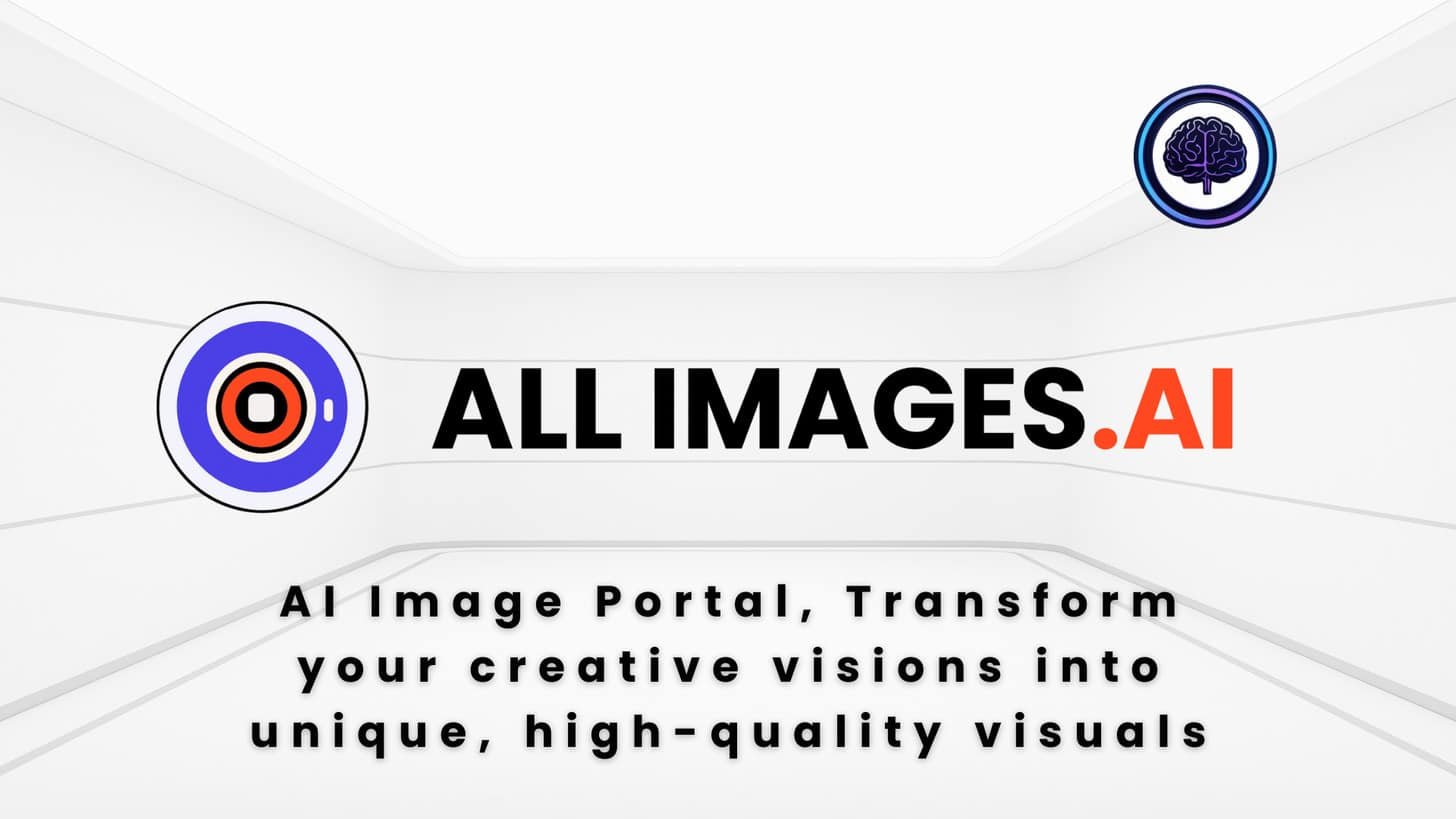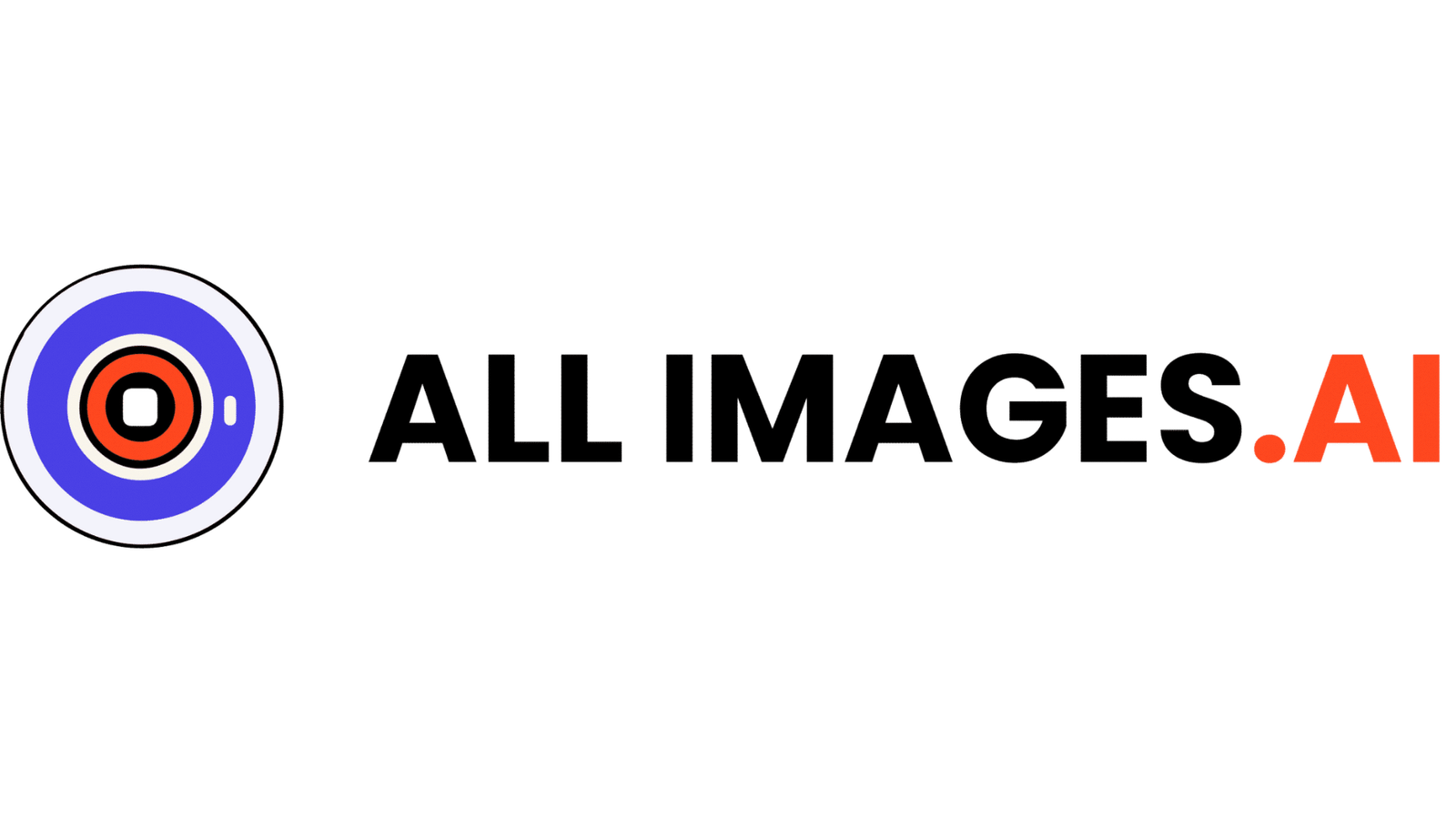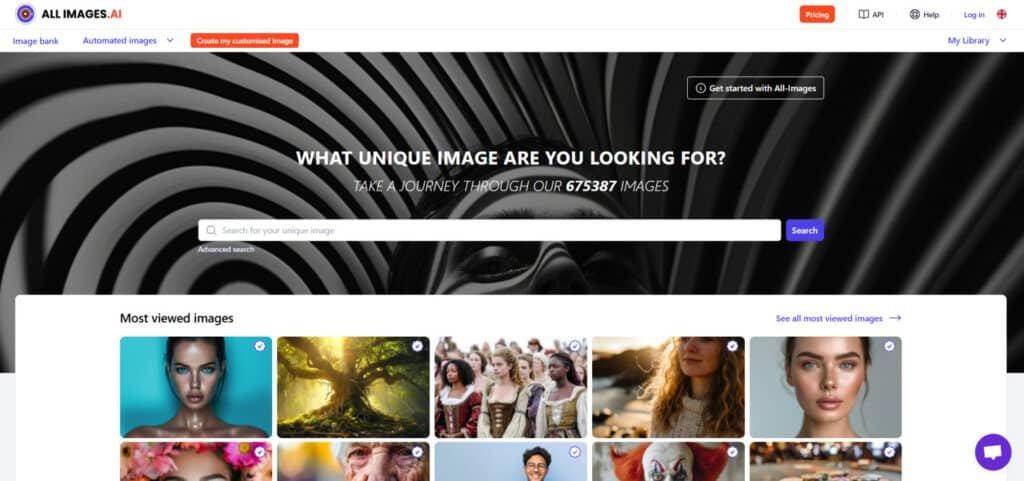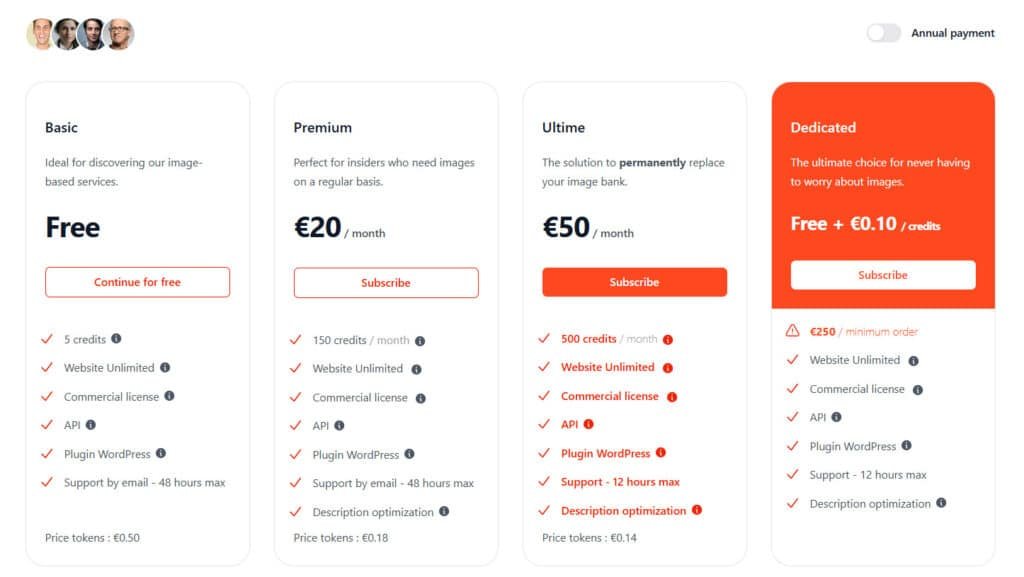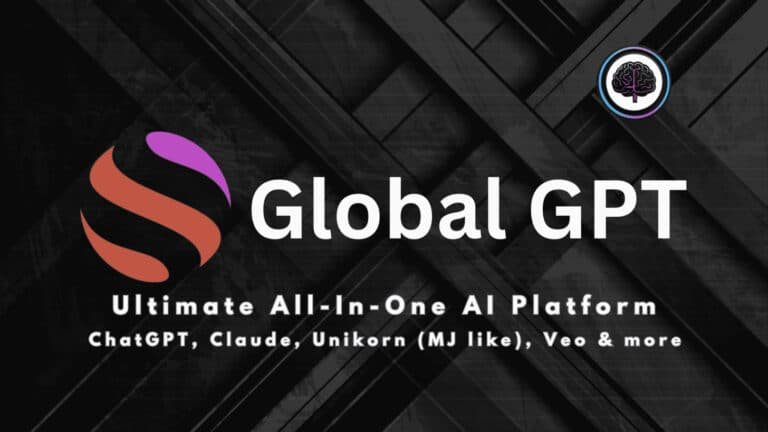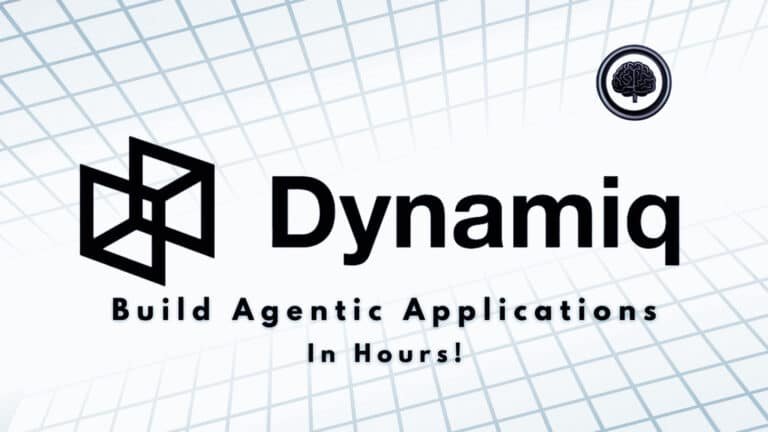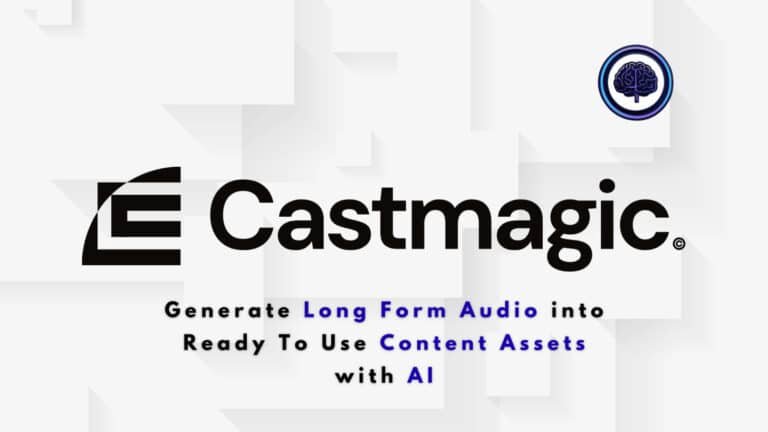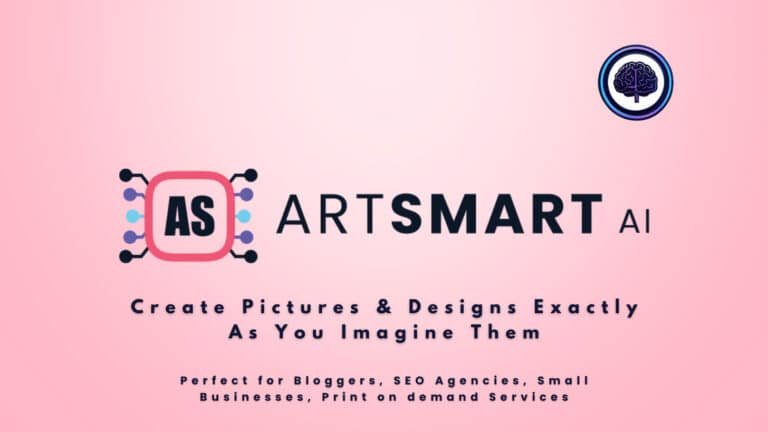You need high-quality images fast, but traditional stock sites feel stale and custom generation eats time and budget. Teams waste hours hunting for the right image, juggling licenses, and stitching assets into campaigns.
I’ve been there—delays kill momentum and creative flow. When a campaign needs a picture today, slow workflows and opaque pricing turn a simple task into a week-long headache. That friction adds cost per month and dents brand consistency.
Enter the portal I tested for this article: a library with API access, volume pricing (~€0.004 per photo), credits, and quick collaboration tools. I’ll show where it speeds discovery, when it complements generators, and how easy use translates to predictable monthly ROI.
I set out to write the definitive take on what it does well, where it falls short, and whether it replaces stock sites. Expect practical examples, workflow times, and a clear verdict so you can decide fast. Here’s how it works—let’s dive in.
Key Takeaways: All-Images.AI Review
- I tested catalog, custom generation, credits, API, and collaboration in real workflows.
- Pricing is transparent—volume tiers start near €0.004 per photo, useful for monthly budgeting.
- The portal speeds image discovery and can complement generators for brand consistency.
- Workflow saves time on licensing and basic edits, but complex retouching still needs manual work.
- By the end of this article you’ll know who benefits most and how to estimate ROI per month.
All-Images.Ai Review: An Overview
Raamish’s Take
All-Images.ai serves as your AI-powered image bank, offering a vast catalog of unique visuals you own exclusively after purchase.
It starts with a free custom image creation—describe your idea, and get four options to download, perfect for websites or blogs.
The platform excels with automated bulk images that sync with WordPress content, plus an image-to-tattoo converter for personalized designs.
High-quality outputs in various sizes and API integration streamline workflows, while personalized watermarks add branding flair.
Tired of generic stock photos? All-Images.AI delivers fresh, SEO-boosting visuals, trusted by users seeking originality.
Introduction to All-Images.Ai
I wanted to know whether a ready-to-license image catalog still saves teams time compared with building visuals from scratch. In a landscape dominated by big generators like ChatGPT (GPT-4o), Midjourney, and Stable Diffusion, this portal positions itself as an AI-first platform for publish-ready visuals.
I find it useful when you need a specific header or brand-safe image fast. Editors warn that generators can be slower than licensing for one-off assets—tweaking a prompt or adjusting text in an image can cost hours.
Founding details are thin on the public record; from my use it behaves like a focused, product-led tool built for practical teams rather than hype. The purpose is simple: cut the time from brief to publishable image while keeping licensing predictable.
- Who uses it: marketing managers, editors, designers, and product leads who need a lot of images each month.
- How it helps: blends search with AI refinement so you move from idea to image faster than building everything with generators.
“A stock-style portal still saves time when you need on-brand visuals quickly.”
What is All-Images.Ai?
I dug into how the service actually produces and serves publish-ready visuals for teams on a deadline. At a glance it behaves like a stock catalog merged with on-demand generation. You can search a curated library, steer a model, or create a new image from scratch.
How it works under the hood
The system blends a large, searchable catalog of curated images with on-demand generation. That means you can find a near-match, tweak style presets, or ask for a net-new visual without leaving the site.
Tech note: it likely runs modern diffusion-style models and style presets to keep results consistent. Safety filters reduce risky content for commercial use.
Who benefits most
It fits teams that ship often. Marketers under tight deadlines, editors who need cleared assets, designers who want fast baselines, and product teams that push images into apps or templates all gain value.
- Credit system: maps downloads and variants to predictable budgets.
- On-platform editing: crop, color, and framing cuts context switching.
- API access: lets product and developer teams embed images into workflows and the wider product.
Bottom line: faster path from brief to approved image, fewer tools to juggle, and clearer licensing for team budgets.
How All-Images.Ai fits into today’s AI image landscape
In a market crowded with powerful generators, I tested how a stocked, license-ready library changes the speed and certainty of image sourcing. You’ll see where it beats prompt-heavy workflows and when a generator still makes sense.
Where it stands versus AI image generators and enhancers
I find that models like ChatGPT (GPT-5.1), Midjourney, Ideogram, Stable Diffusion, FLUX.1, Adobe Firefly, and Recraft produce excellent art and photoreal outputs.
But for quick headers or campaign photos that must be brand-safe and cleared, a stock-style source wins. It removes hours of prompt tweaking and lowers approval risk.
Why stock-style, ready-to-license images matter now
Practical teams care about predictable pricing, fast approvals, and consistent design. A searchable catalog plus simple presets shortens the path from brief to publish.
Net impact: faster photo sourcing, clearer approvals, and less time lost to prompt iteration.
“Licensing a ready image often beats generating from scratch when speed and legal clarity matter.”
| Feature | Generators | Enhancers | Stock-style portal |
|---|---|---|---|
| Speed to publish | Variable (prompt cycles) | Fast for edits | Fast and predictable |
| Licensing clarity | Often unclear | Depends on source | Clear credits/pricing |
| Brand consistency | Needs careful prompts | Helps refine | Presets and catalog breadth |
| Best use | Art, bespoke visuals | Asset improvement | Headers, hero photos, editorial |
Features of All-Images.AI
I tested the core capabilities to see which features save the most time in real workflows. Below I explain each feature, why it matters, and how your team can use it to cut production time.
1. AI Image Bank
The AI Image Bank offers over 2 million unique images for websites, social media, and branding. This feature streamlines image generation, saving time for business owners. The searchable catalog ensures quick access to high-quality results, integrating with software workflows. For readers seeking visuals, it simplifies sourcing, boosting project efficiency.
1.1 Massive Ready-to-Use Catalog
A vast, searchable image set speeds discovery, reducing hunting time. Teams focus on deployment, enhancing productivity for marketing or web projects.
1.2 Superior Quality
High-resolution images ensure professional outputs, minimizing editing. Designers achieve polished results for client deliverables without revisions.
1.3 High-Resolution Output
Production-ready photos with quality checks cut approval time. Businesses deploy images confidently, meeting commercial standards.
1.4 Variety of Sizes
Multiple sizes fit project needs, optimizing load times. Developers create responsive designs, improving engagement.
1.5 Exclusive Ownership
Purchased images are removed, ensuring uniqueness. This protects branding, ideal for proprietary campaigns.
1.6 Search Functionality
A search icon locates images fast. Marketers align visuals with goals, streamlining curation.
1.7 Applications
Supports blogs, ads, and POD. Diverse images drive SEO and engagement across platforms.
2. Custom Image Creation
Custom Image Creation transforms text into tailored ai-generated images. This feature enables precise image generation, offering four variants per prompt.
For creators seeking bespoke visuals, it eliminates generic stock limits, enhancing project uniqueness with minimal editing.
2.1 Text-to-Image Generation
Describe an image, get four variants. This process aids prototyping, saving time for non-designers.
2.2 Custom Generation with Style Controls
Adjust composition, color, and lighting in-platform. Designers tailor images to briefs, reducing external editing.
2.3 High Customization
Specify styles or artists for nuanced ai-generated images. Teams maintain a consistent version, cutting costs.
2.4 Prompt Optimization Tips
Clear 4–12-word prompts with style details optimize results. Novices achieve pro-grade images efficiently.
2.5 No Design Skills Required
User-friendly for beginners. Small business teams produce assets internally, saving outsourcing costs.
2.6 Applications
Ideal for graphics, marketing, or branding. Custom images boost engagement in version-specific campaigns.
3. Automated Bulk Image Generation
Automated Bulk Image Generation creates and integrates visuals for WordPress sites, streamlining large-scale image workflows.
The process automates content-aligned creation, saving time. Businesses seeking efficiency populate sites with SEO-optimized images, accelerating launches.
3.1 Content Analysis
AI scans texts for relevant prompts, ensuring contextual images. Content managers enhance narrative flow.
3.2 Batch Creation
Generates 50–500 tailored images. E-commerce operators streamline product visuals, improving catalogs.
3.3 Seamless WordPress Integration
One-click imports place images in posts. Developers save integration time, updating sites faster.
3.4 Time-Saving Automation
Auto-adds visuals to new content. Teams focus on strategy, scaling business growth.
3.5 SEO Optimization
ALT tags and EXIF data boost rankings. Marketers optimize version for visibility.
3.6 Use Cases
Covers blogs or products. Operators refresh libraries cost-effectively.
3.7 Applications
Suits publishers and marketers. Dynamic images enhance client deliverables.
4. Image Pack Creation
Image Pack Creation delivers themed AI visual sets via a three-step process. It ensures cohesive images for projects. Designers seeking bundled assets assemble series efficiently, maintaining campaign consistency.
4.1 Three-Step Process
Define needs, generate, receive in 48 hours. Leads align packs with deadlines.
4.2 Full Usage Rights
Unrestricted rights for commercial use. Businesses secure flexibility for ads.
4.3 Applications
Supports SEO, blogs, and ads. Packs unify version across channels.
4.4 Benefits
Saves time, ensures quality themes. Freelancers accelerate client turnarounds.
5. Image Generator API
The Image Generator API powers scalable image generation for apps, starting at €0.004 per photo. Developers integrate it to automate visuals, enhancing app functionality without building new software.
5.1 API Access for Pipelines
Hooks into CMS for on-brand images. SaaS builders improve user retention.
5.2 Seamless Integration
Direct access fits workflows. Teams reduce development overhead.
5.3 High-Quality Outputs
High-res images for production. Enterprises scale global visuals.
5.4 Cost-Effective
Low rates suit growing models. Startups manage expenses.
5.5 Applications
Powers websites and apps. Innovators embed real-time customization.
5.6 Customization
Tailors via keywords. Creators refine for niche needs.
6. AI-Powered Editing Tools
AI-Powered Editing Tools refine generated images on-platform, enhancing quality without external software. This suite supports editing in image workflows, from fills to upscales. Editors searching for integrated solutions use it to polish assets swiftly, maintaining momentum in revision-heavy processes.
6.1 On-Platform Editing: Color, Filters, Crops, and Quick Brand Tweaks
Adjusts color, applies filters, crops formats, and adds tweaks directly. This reduces external tool switches. Designers achieve brand-aligned version rapidly, streamlining client feedback loops.
6.2 Generative Fill
Reimagines parts with AI content for targeted enhancements. The process fills gaps seamlessly. Photographers enhance compositions, yielding polished results for portfolios.
6.3 Seamless Integration with Photo Editors
Imports to platforms for advanced work. This bridges AI and traditional editing. Pros extend capabilities, combining strengths for hybrid workflows.
6.4 Advanced Editing Options
Includes watermarks, EXIF mods, upscaling, outpainting, and augmentation. These expand creative scope. Marketers customize for campaigns, ensuring versatile image applications.
6.5 Applications
Suits designers, marketers, and creators for pro enhancements. It elevates raw outputs. Teams produce market-ready visuals, boosting project value.
7. Team Collaboration Workspace
Team Collaboration Workspace organizes group image management (unconfirmed). It aids distributed business operations. Teams seeking collaborative tools coordinate via roles, streamlining editing.
7.1 Team Workspace
Role-based folders prevent overlaps. Groups align on visuals.
7.2 Value
Streamlines consistent outputs. Remote teams save coordination time.
8. Model Selection and Style Presets
Model Selection and Style Presets locks preferences for uniformity, unconfirmed but implied in customizations. This aids consistent ai-generated images. Designers select for campaigns, minimizing variations.
8.1 Model Selection and Style Presets
Chooses models and presets to reduce iterations. The process standardizes aesthetics. Creatives achieve cohesive version, speeding approvals.
8.2 Value
Maintains looks across projects. It cuts revision needs. Agencies deliver uniform branding reliably.
9. Credit-Based Downloads
Credit-Based Downloads manages purchases predictably, unconfirmed but aligns with per-image pricing. It tracks usage for budgets. Buyers control spends in image acquisition.
9.1 Credit-Based Downloads with Flexible Limits
Sets allowances and monitors per asset. This avoids overruns. Managers forecast costs accurately.
9.2 Value
Maps to budgets transparently. It supports scalable planning. Businesses may choose to optimize without surprises.
10. Legal and Ethical Considerations
Legal and Ethical Considerations ensure compliance in ai-generated images use. It addresses ownership post-purchase. Searchers verify rights for safe deployment.
10.1 Exclusive Ownership
Removes images from catalog for uniqueness. This protects assets. Users deploy confidently in commercial contexts.
10.2 Copyright Clarity
Grants full rights despite AI origins. It clarifies usage scopes. Creators license freely for revenue streams.
10.3 Responsible Usage
Promotes transparency in editing and sharing. This builds trust. Marketers disclose origins ethically.
10.4 Biometric Data Privacy
Complies for people photos, avoiding releases. It safeguards sensitive visuals. Businesses mitigate risks in diverse campaigns.
10.5 Limitations
Notes text image challenges, with improvements. This informs realistic expectations. Users adapt prompts for better results.
11. Additional Features
Additional Features boost efficiency with extras like watermarks. These tools enhance core software integrations. Operators expand capabilities seamlessly.
11.1 Personalized Watermarks
Adds custom marks for branding. This secures images in distribution. Teams protect intellectual property effortlessly.
11.2 Direct Website Linking
Connects images to sites directly. The way simplifies embedding. Developers deploy faster.
11.3 Video Tutorials
Guides demonstrate functionalities. This accelerates onboarding. New users master the platform quickly.
11.4 Free Image Downloads
Offers no-reg downloads for testing. It lowers entry barriers. Explorers sample results risk-free.
11.5 Newsletter Subscription
Updates on news and promotions. This keeps subscribers informed. Businesses stay ahead of version releases.
“These features together form a practical, predictable way to get publishable visuals fast.”
Use cases: the fastest way to source images for content and design
For busy teams, sourcing a near-perfect photo and tweaking it beats long prompt loops every time. That simple shift—start from a curated match, not from zero—saves time and reduces risk when you must publish fast.
Blog articles, social posts, and newsletters
Editorial teams can pull a relevant image, adjust crop and color, and publish within minutes. I used this for headers—no lengthy prompt cycles or off-brand surprises.
Social teams get options to A/B test multiple images quickly. The catalog plus quick edits makes fast iteration possible when trends change by the hour.
For newsletters, saving styles and reusable assets keeps week-to-week look consistent. That reduces last-minute scrambles and approval churn.
Landing pages, ads, and ecommerce product visuals
Landing pages and ads need clean, on-brand photos. Start with a lifestyle or product image, then crop for placements without leaving the tool.
For ecommerce, build product galleries that share consistent lighting and framing. That consistency boosts conversion and cuts agency time.
Team collaboration and speed
Collaboration matters: editors and designers can edit inside the workspace, share folders, and approve with linked credits. That shortens feedback loops.
“When deadlines are tight, the fastest way is often to start from a close match in the catalog rather than build from zero with generators.”
| Use case | Typical workflow | Primary benefit | Quick tip |
|---|---|---|---|
| Editorial article headers | Find image → crop → color adjust → publish | Faster publication, fewer approval rounds | Save header presets |
| Social and A/B testing | Pick variants → apply filter → schedule posts | Rapid iteration, trend responsiveness | Use small crops for mobile |
| Landing pages & ads | Select hero → crop for placements → export sizes | Brand-consistent visuals, less designer time | Keep aspect presets per campaign |
| Ecommerce galleries | Upload/store product shots → sync styles → publish | Consistent product images across funnel | Batch apply lighting presets |
How it works: from prompt to picture
Here’s the practical flow I use when I need a finished image in minutes, not hours. Start with a clear idea, then use the platform to narrow style and composition fast. The process keeps review cycles short and the final picture ready for publish.
Start with a prompt, refine style, color, and composition
Step 1: Search or write a single-line prompt—short and specific. Pick a style preset to lock tone and framing before you generate. Adjust color and lighting to match your brand or campaign and save those presets for reuse.
Iterate with variations, filters, and model options
Generate a few images and use quick filters to test moods. Try varied angles and backgrounds to see what pops without wasting time. Switch model options if you need photoreal or a more stylized render.
Download via credits or push to your CMS with the API
When a version fits, spend credits for the final export—resolutions and rights appear before you confirm. Or use the API to send the image straight to your CMS, which removes manual download/upload steps and saves time each month.
“Aim for a tight loop: prompt, preview, tweak, export—minutes, not hours.”
- Quick checklist: search/prompt → lock style → tweak color → test variations → pick model → export via credits or API.
Prompting tips for better images
Clear prompts cut wasted cycles—here are practical rules I use to get predictable images fast. These tips work whether you start from a catalog match or generate from scratch.
Structure and style tags that actually help
Start with a tight order: subject → action → setting → mood → lighting. Short, direct text tends to make any model behave better.
- Keep it compact: one-line prompt, then a second line for two style tags (e.g., “soft studio light, minimal background”).
- One or two tags only: avoid laundry lists—fewer descriptors yield steadier results.
Negative prompts and consistency language
Use negative prompts to remove recurring issues: “no clutter, no extra people, no logos.” It’s the fastest fix for messy backgrounds.
Lock lens and lighting wording—phrases like “50mm, soft key light” become your baseline across images. Reuse them to keep campaigns consistent.
“Save a preset for your lens and lighting language—your team will thank you when results match.”
- Save presets so everyone defaults to the same style.
- When models change behavior, A/B two short variants, pick the cleaner one, then standardize it.
- Test small crops and color tweaks on quick previews before you spend credits.
Models, styles, and quality control
Start by deciding if the asset must look like a photo or like crafted art; that choice guides every option after. Pick a model based on outcome: photoreal models work best for product and lifestyle photos, while stylized models suit illustration and graphic design art.
Photorealistic photos versus artistic outputs
Photoreal output aims for natural lighting, accurate anatomy, and real-world textures. Use it for ecommerce, hero headers, and campaign images that must feel believable.
Art and graphic design outputs embrace stylized composition and bold colors. They work for posters, social creative, and brand-led visuals where personality beats realism.
Consistency, prompt adherence, and text-in-image behavior
Keep visuals consistent by reusing the same model and style preset across a campaign. Combine those presets with light filters to hold an editorial package together.
Simpler prompt language tends to yield steadier image results. The platform’s presets reduce the need for long instructions and improve prompt adherence.
Text-in-image has improved, but I always zoom previews before spending credits. Check logos, prices, and headlines—typography errors still slip through.
“Lock model + style, preview closely, and use on-platform edits for fast approvals.”
- Quality control: preview, zoom for artifacts, confirm text areas.
- Editing options: quick color and crop fixes on-platform; advanced retouch off-tool.
- Governance: keep a short QA checklist before export to your CMS.
Pricing Plans of All-Images.AI
I looked closely at packs, monthly plans, and API rates to see how costs scale with use.
Basic Plan
Free for monthly or annual plans, ideal for discovering services. 5 credits; unlimited websites; commercial license; API access; WordPress plugin; email support (48 hours max); token price €0.50 monthly or €0.50 annually.
Premium Plan
€20/month or €200/year (from €240, 2 months free) for regular image needs. 150 credits monthly/1800 annually; unlimited websites; commercial license; API; WordPress plugin; email support (48 hours max); description optimization; token price €0.18 monthly or €0.15 annually.
Ultime Plan
€50/month or €500/year (from €600, 2 months free) to replace traditional image banks. 500 credits monthly/6000 annually; unlimited websites; commercial license; API; WordPress plugin; support (12 hours max); description optimization; token price €0.14 monthly or €0.11 annually.
Dedicated Plan
Free + €0.10/credit monthly or annually, with €250 minimum order for unlimited needs. Custom credits; unlimited websites; commercial license; API; WordPress plugin; support (12 hours max); description optimization.
| Feature | Basic (Free) | Premium (€20/mo) | Ultime (€50/mo) | Dedicated (Custom) |
| Credits/mo | 5 | 150 | 500 | Custom |
| Support | 48h email | 48h email | 12h | 12h |
| Token Price | €0.50 | €0.18 | €0.14 | €0.10 |
| Annual Savings | None | 2 months free | 2 months free | Min €250 order |
“For API-heavy use, calculate monthly volume (publish + backfill) to pick the right plan.”
Pros & Cons of All-Images.Ai
Let’s break down the practical advantages and the limitations I hit in real workflows. Below is a concise view so you can quickly decide if this fits your team’s needs.
Pros
- Fast sourcing — find a usable image in minutes, which cuts publishing time and keeps projects on schedule.
- Predictable cost — credits make budgeting simple; you know spend per export ahead of time.
- On-platform features — basic edits (crop, color, filters) reduce tool switching for most content work.
- Team and API support — shared roles and push-to-CMS options stop approval bottlenecks and automate repetitive steps.
Cons
- Ultra-specific briefs — very niche concepts often do better with dedicated generators tuned by long prompts or finetunes.
- Advanced retouching — complex compositing still needs a human editor with pro tools and skill.
- Unique brand shoots — for bespoke product or lifestyle photography you’ll want a photographer; the portal won’t fully replace that craft.
“Use this when speed and consistency matter; switch to generators or editors when precision, novelty, or heavy manipulation is critical.”
Quick summary: The service gives clear pros for teams that value speed and predictable budgets, but the cons matter when you need extreme precision or creative novelty. If you need radical customization, consider a generator or a human editor next.
| Decision | When to use | When to switch |
|---|---|---|
| Quick campaign assets | Fast sourcing, on-platform edits | Don’t use if you need bespoke retouching |
| High-volume publishing | Credits + API automation | Switch if creative uniqueness is required |
| Brand photography | Good for placeholders and consistency | Hire a photographer for signature shots |
Alternatives To All-Images.AI
Not every brief needs the same approach. Below are practical alternatives I use when a different kind of image, control, or finish is required.
All-Images.AI delivers fast text-to-image with uncrop, outpainting, and generative fill—great for expanding product shots or creative edits at $15/month unlimited. These six tools push further in realism, consistency, or scale for high-detail work.
Getimg
Getimg excels at character consistency, LoRA training, and image-to-video motion. Brands building series get seamless results—free 100 images/month, $12/month unlimited. I trained a model on my brand; outputs stayed perfect across campaigns – Read Full Review
Imagine.art
Imagine.art offers 70+ fine-tuned styles, remix tools, and short animations for artists. Daily experiments feel endless—generous free tier, $7/month Pro for HD and no limits. I remixed a concept; variations sparked fresh ideas – Read Full Review
Artspace
Artspace handles 4K upscale, face restoration, and batch uncensored generations. Agencies crank commercial stock—free trial, lifetime $77 common. I upscaled old photos; detail popped without artifacts – Read Full Review
Imagine.pro
Imagine.pro focuses on photorealistic outputs with background removal and text-behind effects. Marketers create social visuals quick—free trial, $8/month for 300 credits. I added text to a product shot; looked pro in seconds – Read Full Review
Flux.1 AI
Flux.1 AI leads in raw photorealism and prompt adherence via Pro/Dev models. Pros get lightning-fast detail—free credits, $10/month Pro access. I generated a complex scene; hands and text nailed first try – Read Full Review
Artsmart.AI
Artsmart.AI provides pose copying, inpainting, and playground tweaks for beginners. Fun results without steep learning—$19/month core features. I copied a pose from reference; output matched exactly – Read Full Review
These edge All-Images in training, realism, or extras like video. Need consistency or raw power? One will match your workflow.
| Tool | Key Strengths | Starting Price | Best For |
|---|---|---|---|
| All-Images.AI | Uncrop, outpaint, generative fill | $15/month | Expanding shots & creative edits |
| Getimg | Character consistency, LoRA, image-to-video | $12/month | Branding series & motion |
| Imagine.art | 70+ styles, remix, short animations | $7/month | Artistic exploration & HD |
| Artspace | 4K upscale, face fix, batch uncensored | $77 Lifetime | Commercial stock & teams |
| Imagine.pro | Photoreal, bg remove, text effects | $8/month | Marketing & social graphics |
| Flux.1 AI | Hyper-realism, prompt accuracy | $10/month | Detail pros & complex scenes |
| Arsmart.AI | Pose copy, inpaint, beginner playground | $19/month | Quick experiments & edits |
Enhancers & pipelines
Claid.AI, AdCreative.AI, VideoProc, HitPaw, and Fiverr cover sharpening, editing, and human polish.
- Quick steer: pick a generator for creative art, Ideogram for text-heavy designs, and Stable Diffusion or FLUX when you need fine control.
- Weigh pricing per month, trial offers, and how each option maps to your team pipeline and editing needs.
Integrations, API, and workflow automation
Connect your image pipelines so approvals and drafts sync automatically—no more manual download-upload loops. I set up the API with a CMS to push approved images straight into article drafts. That cut handoffs and trimmed review time.
For DAMs, push assets with metadata—campaign, rights, and expiry—so librarians and legal can find and audit files without extra email chains.
CMS, DAM, and design tool handoffs
Designers can pull the same images into Figma or Adobe using the platform plugin or a simple webhook. That keeps one source of truth for visuals and reduces mismatched files during handoff.
- CMS: auto-attach approved image to draft; save time on uploads.
- DAM: sync metadata and rights for instant traceability.
- Design tools: link assets to design files so teams work from the same source.
Batch generation and scheduled content pipelines
Schedule batch generation for recurring slots—weekly social posts or monthly newsletters—and align your plan and pricing to expected monthly volumes. Volume pricing makes high-throughput work cheaper per image.
Monitor credits in real time and set alerts before thresholds hit. I recommend a safety buffer to avoid mid-cycle stalls when a campaign spikes.
“Automate resizing and cropping for channel variants — it’s the easiest time saver at scale.”
Governance: Log model, style, and prompt fragments per asset. That gives QA control and lets you trace issues back to the source when an image needs rework.
- Automate exports to CMS or DAM to save time.
- Use credit monitoring and alerts to manage monthly spend.
- Keep a short audit trail (model, style, prompt) for governance and troubleshooting.
Case Study / Personal Experience with All-Images.AI
For one fast-moving campaign I timed every step from brief to final image and tracked the savings. The goal was simple: deliver a set of header and inline visuals for a three-article series plus a product landing update in one day.
Real-world results: time saved per article and campaign
For a multi-article sprint I sourced hero images and inline visuals in under an hour. Historically this took half a day with several tabs and multiple approvals.
One campaign needed a product landing revamp. I assembled a cohesive image set with consistent color and framing in a single day, with only minor tweaks afterward.
“The platform cut my review loops and let me focus on content, not hunting for the right picture.”
My experience: from brief to on-brand image set in a day
Credits mapping was transparent—I could see remaining credits per day and predict spend per month. That visibility made pricing feel manageable for our plan.
The API pushed finished photos directly into the CMS draft queue. That trimmed manual steps and saved measurable time on each publish.
- I used external tools for only two tricky photos; on-platform edits handled the rest.
- Overall, fewer revisions and faster approvals meant the service paid for itself in the first month.
Conclusion: All-Images.Ai Review
Raamish’s Take
All-Images.ai serves as your AI-powered image bank, offering a vast catalog of unique visuals you own exclusively after purchase.
It starts with a free custom image creation—describe your idea, and get four options to download, perfect for websites or blogs.
The platform excels with automated bulk images that sync with WordPress content, plus an image-to-tattoo converter for personalized designs.
High-quality outputs in various sizes and API integration streamline workflows, while personalized watermarks add branding flair.
Tired of generic stock photos? All-Images.AI delivers fresh, SEO-boosting visuals, trusted by users seeking originality.
For tight schedules, a hybrid catalog-plus-generation option often saves the most time. If your team publishes regularly and needs a reliable image fast, this option removes a lot of friction from sourcing. It’s a sensible choice when you value speed and clear workflows.
Plan your monthly credits so pricing is predictable and you avoid day-to-day surprises. The combination of catalog search, on-platform editing, generation, and API integration fits content pipelines that ship a lot each month.
I recommend starting with a short trial, build a simple governance guide, and push approved images into your CMS. If you publish daily or weekly, this will cut review loops and free up time to focus on the article and campaign strategy—try it for a month, then adjust your plan.
Ready to cut sourcing time? Start the trial, map monthly targets, and reassess after 30 days.
Frequently Asked Questions
What is the licensing model for images and can I use them commercially?
The platform offers ready-to-license, commercial-use images—many are cleared for marketing, ads, and product use. You get license details per image at download (royalty-free style). For enterprise needs, check the API and volume licensing terms to confirm extended rights and attribution rules.
How do credits work — per image, per day, and per month?
Downloads and custom generations use a credit system. Each image costs a set number of credits depending on resolution and model. You can buy monthly packs or one-off credit bundles. There’s usually a daily soft limit for free-tier users and rollover options on paid plans—so plan based on your monthly output.
Is there a free tier or trial, and what limits does it have?
Yes — there’s a free offer with limited daily credits and access to a selection of stock images. It’s great to test generators and presets but comes with lower-resolution downloads and watermarked previews on some assets. Upgrading unlocks higher-res, API calls, and team sharing.
How good is the image quality for product photos and hero banners?
Quality is generally high for both photorealistic product shots and stylized hero images when you pick the right model and use the style presets. For pixel-perfect ecommerce photos, you may need post-editing (color correction, background cleanup) using the built-in editors or external tools.
Can I generate images from text prompts and control style consistently?
Yes — you start with a text prompt and refine with style controls (color, lighting, lens, composition) and model selection. Use presets and save templates to maintain consistency across campaigns. Negative prompts help reduce unwanted elements in outputs.
Does the service support API access and CMS integration?
It provides API access for apps, SaaS, and editorial pipelines. You can push generated images directly to your CMS or DAM, batch-generate assets, and automate scheduled content pipelines. Enterprise plans include higher rate limits and webhook support.
Are there editing tools built in (filters, crops, color adjustments)?
Yes — basic and advanced editors let you crop, apply filters, tweak color, and make on-brand adjustments. For complex retouching, export to Photoshop or your preferred editor. Team workspaces let editors share versions and keep brand presets centralized.
How does model selection affect results and cost?
Different models prioritize photorealism, stylized art, or graphic output. Photorealistic models often cost more credits per image but deliver cleaner product shots. Artistic or experimental models are cheaper for concept visuals. Choose based on final use and budget.
What are typical use cases — who benefits most?
Marketers, editors, designers, and product teams benefit most. Use cases include blog imagery, social posts, landing pages, ads, and ecommerce visuals. It speeds up campaigns, reduces studio costs, and supplies quick A/B test assets.
How does this portal compare to Midjourney, Stable Diffusion, or Adobe Firefly?
It sits between stock libraries and pure generators. Compared to Midjourney, it’s more stock-focused and ready-to-license. Against Stable Diffusion, it’s more turnkey with presets and quality guarantees. Adobe Firefly ties better into Adobe workflows—choose based on integration needs and creative control.
What are the main pros and cons I should consider?
Pros: speed, cost control with credits, team features, and a large ready-to-use catalog. Cons: some highly specialized or hyper-real images may still need a dedicated photographer or manual editing; occasional model inconsistency with certain prompts.
Is there brand safety and content moderation?
Yes — the platform includes safety filters, moderation tools, and license checks to avoid restricted content. There are options to enforce brand-safe presets and block certain themes across team workspaces.
How do I get consistent text-in-image behavior for product labels or slogans?
Use models tuned for accurate text, supply vector mockups, or overlay text in the editor after generation. Ideogram-style tools excel at accurate in-image text; otherwise, generate the image then add finalized copy in a design tool to ensure fidelity.
Are enterprise plans and volume pricing available for heavy API use?
Yes — enterprise and API volume plans exist with per-photo pricing that can go as low as around €0.004 for very large volumes. These plans include SLAs, higher rate limits, single-sign-on, and dedicated support.
Can teams share credits and manage roles and folders?
Team workspaces support shared credits, role-based access, folder organization, and approval workflows. It’s designed for agencies and in-house teams to collaborate without losing control over spending or brand assets.
What’s the best way to prompt for on-brand images quickly?
Structure prompts with clear subject, style tag, color palette, and lens/lighting language. Save templates for recurring themes, use negative prompts to remove artifacts, and iterate with small variations until you lock a consistent look.
Can I use generated images in ads without extra attribution?
Generally yes—most downloads include a commercial license that allows ad use without attribution. Always check the specific image license at download, and review any restrictions for trademarked elements or model releases if people are featured.
How fast are generation and download times, and is there rate limiting?
Generation is typically a few seconds to a minute depending on model complexity and queue. API plans include rate limits; enterprise tiers raise those caps. Caching and batch generation speed up large workflows.
Are there built-in analytics or reporting on asset usage and spend?
Yes — dashboards show credit spend, downloads, and team activity. You can track cost per campaign, top-performing styles, and set budgets or alerts to control monthly spend.
What integrations are available for design tools and DAM systems?
Popular integrations include direct exports to CMS platforms, DAMs, and design tools like Figma and Adobe Creative Cloud. Webhooks and Zapier-like connectors support custom automation for handoffs.
If an image has an issue (quality or licensing), how is support handled?
Support tiers range from email and docs for free users to priority support and account managers for paid and enterprise plans. Most platforms offer refunds or credit adjustments for licensing or quality failures after review.

